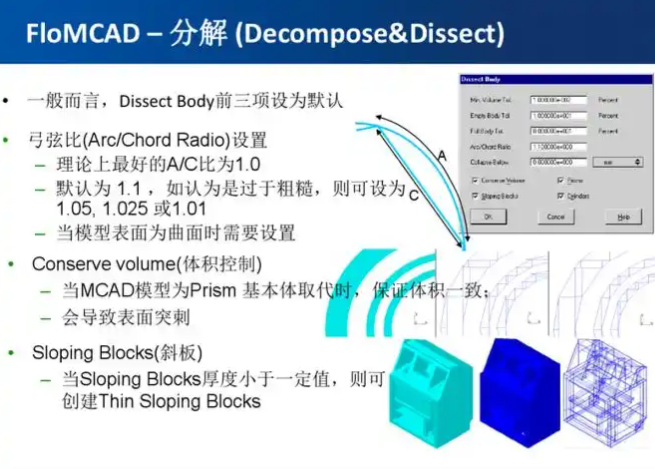热仿真软件flotherm
软件: flotherm
Overview of Flotherm
Flotherm is a leading electronic system thermal simulation software developed by Mentor Graphics (now part of Siemens). It specializes in predicting airflow, temperature distribution, and heat transfer in electronic devices—from component to system levels—using Computational Fluid Dynamics (CFD) and numerical heat transfer technologies. With a market share of over 80% in electronic thermal analysis, Flotherm is widely adopted by top electronics companies (e.g., 98% of users recommend it) for its precision, efficiency, and integration with design workflows. Its core value lies in enabling engineers to identify and resolve thermal issues early in the design phase, reducing physical prototyping time and costs.
Key Functional Modules
Flotherm offers a modular suite tailored to different design needs:
- Basic Thermal Analysis Module: The foundation of the software, supporting model creation, boundary condition setup (e.g., ambient temperature, power dissipation), simulation execution, and result visualization. It handles fundamental thermal performance evaluation for electronics.
- Advanced Thermal Analysis Module: Enhances basic capabilities with multi-physics coupling (electromagnetic, fluid flow), finer mesh resolution, and advanced solvers. Ideal for complex scenarios like high-power devices or multi-domain interactions.
- Optimization Design Module: Automates design optimization using Design of Experiments (DOE) and Response Surface Methodology (RSM). Users define goals (e.g., minimize maximum temperature) and constraints (e.g., airflow limits), and the module adjusts parameters (fan speed, heatsink size) to find optimal solutions, cutting optimization time significantly.
- Post-Processing & Visualization Module: Transforms raw simulation data into intuitive visuals (temperature contours, airflow velocity vectors, dynamic flow traces, 3D animations). It also supports data export (CSV, AVI) and report generation, facilitating clear communication with stakeholders.
Technical Advantages

Flotherm’s leadership in electronic thermal simulation stems from several proprietary technologies:
- SmartParts: Parameterized model libraries for electronic components (heatsinks, fans, PCBs, connectors). These pre-validated models reduce modeling time by up to 20% and ensure accuracy by incorporating 20+ years of industry experience.
- Structured Cartesian Mesh: A robust, numerically efficient grid system optimized for electronic geometries. It supports localized refinement (e.g., around high-power components) to balance accuracy and computation speed. The mesh updates automatically when geometry changes, eliminating manual re-meshing.
- BCI-ROM (Boundary Condition Independent Reduced Order Model): A high-speed transient analysis tool that reduces 3D CFD simulation times by up to 40,000x while maintaining accuracy. BCI-ROMs can be exported to MATLAB/Simulink, VHDL-AMS, or FMU formats, enabling integration with system-level simulations (e.g., power electronics, circuit design).
- MCAD/EDA Integration: Seamless interfaces with mechanical (Creo, SolidWorks, CATIA) and electronic design automation (Allegro, BoardStation) tools. It imports simplified 3D models (STEP) and PCB layouts (IDF), filters out non-thermal details (chamfers, holes), and converts them into thermal equivalents—streamlining the workflow from design to simulation.
Typical Workflow
Using Flotherm for thermal simulation follows a structured, efficient process:
1. Model Setup: Create or import geometry (via SmartParts or MCAD/EDA files). Simplify 3D models by removing unnecessary features (e.g., fasteners) to reduce mesh complexity.
2. Boundary Conditions: Define environmental parameters (ambient temperature, humidity), power sources (component heat dissipation), and airflow (fan specifications). For transient analysis, set time-varying power profiles or thermostat controls.
3. Mesh Generation: Use structured Cartesian mesh with localized refinement (e.g., around CPUs, heatsinks) to ensure accurate results in critical areas. The mesh updates automatically if the geometry changes.
4. Simulation Execution: Run the solver (based on finite volume method) to compute airflow, temperature, and heat transfer. The solver is optimized for electronic systems, delivering fast convergence.
5. Result Analysis: Visualize results using temperature contours, airflow animations, and thermal flux vectors. Identify hotspots (components exceeding safe operating temperatures) and evaluate design trade-offs (e.g., adding a fan vs. increasing heatsink size). Generate reports to document findings and guide design improvements.
Application Areas
Flotherm is widely used across industries for electronic thermal management:
- Consumer Electronics: Smartphones, laptops, LED TVs—optimizing component placement and cooling solutions to enhance reliability and user experience.
- Telecom & Networking: Base stations, routers, switches—ensuring high-power equipment operates within temperature limits to prevent downtime.
- Automotive Electronics: Engine control units (ECUs), infotainment systems, electric vehicle (EV) battery packs—managing heat in harsh environments (e.g., underhood, cabin) to maintain performance.
- Aerospace & Defense: Avionics, satellites, radar systems—addressing extreme temperature variations (e.g., high altitude, desert) to ensure mission-critical reliability.
- Industrial Electronics: Power supplies, motor drives, medical devices (e.g., MRI machines)—mitigating heat-related failures in high-reliability applications.
Flotherm is a leading electronic system thermal simulation software developed by Mentor Graphics (now part of Siemens). It specializes in predicting airflow, temperature distribution, and heat transfer in electronic devices—from component to system levels—using Computational Fluid Dynamics (CFD) and numerical heat transfer technologies. With a market share of over 80% in electronic thermal analysis, Flotherm is widely adopted by top electronics companies (e.g., 98% of users recommend it) for its precision, efficiency, and integration with design workflows. Its core value lies in enabling engineers to identify and resolve thermal issues early in the design phase, reducing physical prototyping time and costs.
Key Functional Modules
Flotherm offers a modular suite tailored to different design needs:
- Basic Thermal Analysis Module: The foundation of the software, supporting model creation, boundary condition setup (e.g., ambient temperature, power dissipation), simulation execution, and result visualization. It handles fundamental thermal performance evaluation for electronics.
- Advanced Thermal Analysis Module: Enhances basic capabilities with multi-physics coupling (electromagnetic, fluid flow), finer mesh resolution, and advanced solvers. Ideal for complex scenarios like high-power devices or multi-domain interactions.
- Optimization Design Module: Automates design optimization using Design of Experiments (DOE) and Response Surface Methodology (RSM). Users define goals (e.g., minimize maximum temperature) and constraints (e.g., airflow limits), and the module adjusts parameters (fan speed, heatsink size) to find optimal solutions, cutting optimization time significantly.
- Post-Processing & Visualization Module: Transforms raw simulation data into intuitive visuals (temperature contours, airflow velocity vectors, dynamic flow traces, 3D animations). It also supports data export (CSV, AVI) and report generation, facilitating clear communication with stakeholders.
Technical Advantages

Flotherm’s leadership in electronic thermal simulation stems from several proprietary technologies:
- SmartParts: Parameterized model libraries for electronic components (heatsinks, fans, PCBs, connectors). These pre-validated models reduce modeling time by up to 20% and ensure accuracy by incorporating 20+ years of industry experience.
- Structured Cartesian Mesh: A robust, numerically efficient grid system optimized for electronic geometries. It supports localized refinement (e.g., around high-power components) to balance accuracy and computation speed. The mesh updates automatically when geometry changes, eliminating manual re-meshing.
- BCI-ROM (Boundary Condition Independent Reduced Order Model): A high-speed transient analysis tool that reduces 3D CFD simulation times by up to 40,000x while maintaining accuracy. BCI-ROMs can be exported to MATLAB/Simulink, VHDL-AMS, or FMU formats, enabling integration with system-level simulations (e.g., power electronics, circuit design).
- MCAD/EDA Integration: Seamless interfaces with mechanical (Creo, SolidWorks, CATIA) and electronic design automation (Allegro, BoardStation) tools. It imports simplified 3D models (STEP) and PCB layouts (IDF), filters out non-thermal details (chamfers, holes), and converts them into thermal equivalents—streamlining the workflow from design to simulation.
Typical Workflow
Using Flotherm for thermal simulation follows a structured, efficient process:
1. Model Setup: Create or import geometry (via SmartParts or MCAD/EDA files). Simplify 3D models by removing unnecessary features (e.g., fasteners) to reduce mesh complexity.
2. Boundary Conditions: Define environmental parameters (ambient temperature, humidity), power sources (component heat dissipation), and airflow (fan specifications). For transient analysis, set time-varying power profiles or thermostat controls.
3. Mesh Generation: Use structured Cartesian mesh with localized refinement (e.g., around CPUs, heatsinks) to ensure accurate results in critical areas. The mesh updates automatically if the geometry changes.
4. Simulation Execution: Run the solver (based on finite volume method) to compute airflow, temperature, and heat transfer. The solver is optimized for electronic systems, delivering fast convergence.
5. Result Analysis: Visualize results using temperature contours, airflow animations, and thermal flux vectors. Identify hotspots (components exceeding safe operating temperatures) and evaluate design trade-offs (e.g., adding a fan vs. increasing heatsink size). Generate reports to document findings and guide design improvements.
Application Areas
Flotherm is widely used across industries for electronic thermal management:
- Consumer Electronics: Smartphones, laptops, LED TVs—optimizing component placement and cooling solutions to enhance reliability and user experience.
- Telecom & Networking: Base stations, routers, switches—ensuring high-power equipment operates within temperature limits to prevent downtime.
- Automotive Electronics: Engine control units (ECUs), infotainment systems, electric vehicle (EV) battery packs—managing heat in harsh environments (e.g., underhood, cabin) to maintain performance.
- Aerospace & Defense: Avionics, satellites, radar systems—addressing extreme temperature variations (e.g., high altitude, desert) to ensure mission-critical reliability.
- Industrial Electronics: Power supplies, motor drives, medical devices (e.g., MRI machines)—mitigating heat-related failures in high-reliability applications.











